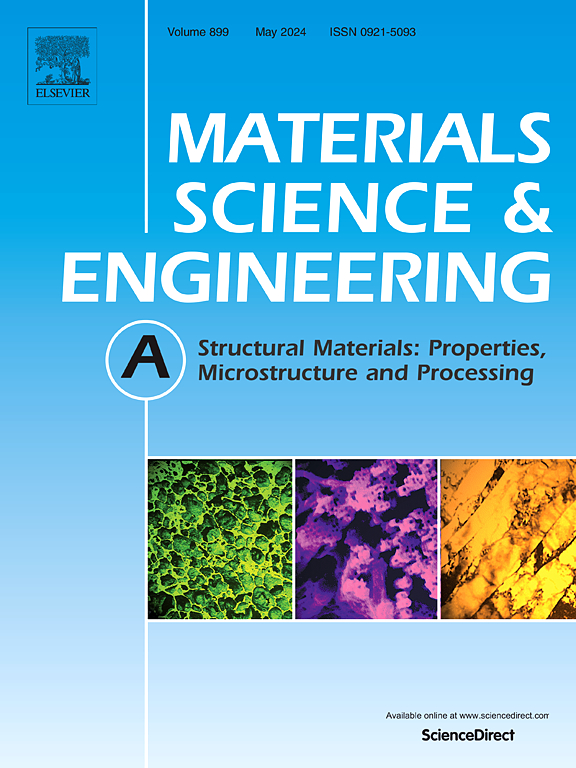Effect of Er, Zr, V, Ti microalloying and muti-field coupling melt deep purification on the microstructure and mechanical properties of Al-12Si-4.5Cu-2Ni alloy
IF 6.1
2区 材料科学
Q1 MATERIALS SCIENCE, MULTIDISCIPLINARY
引用次数: 0
Abstract
In this study, the effects of Er, Zr, V and Ti microalloying and muti-field melt deep purification on the microstructure and mechanical properties of Al-12Si-4.5Cu-2Ni alloy were investigated. The phase diagram calculation and DSC curve showed that the second phases of microalloyed Al-12Si-4.5Cu-2Ni alloy was mainly AlCuNi phase, (Al, Si)3(Zr, Ti, V)-D022/D023, Al2Cu, Al3(Zr, Er) and Al2Si2Sr. The solidus and liquidus temperatures were 518.1 °C and 597.4 °C, respectively. The addition of Er significantly refined the grains and formed L12-Al3(Zr, Er) coherent with the α-Al matrix. Under the action of microalloying elements, the stacking fault energy of aluminum alloy was remarkably reduced, and extensive stacking faults appeared in the α-Al matrix and eutectic Si. Through the coupling degassing of Ar and ultrasonic field, the size and number of pores in the alloy ingot were not only reduced, but also the size of the second phase was refined and distributed more uniformly. The yield strength, ultimate tensile strength and elongation of the alloy after microalloying and multi-field coupling degassing reached 163.9 MPa, 300.2 MPa and 3.2 %, respectively. The second phase of microalloying Al-12Si-4.5Cu-2Ni alloy was systematically analyzed, which will provide a basis for the subsequent design of heat-resistant aluminum alloy and the formulation of subsequent heat treatment process parameters.
求助全文
约1分钟内获得全文
求助全文
来源期刊

Materials Science and Engineering: A
工程技术-材料科学:综合
CiteScore
11.50
自引率
15.60%
发文量
1811
审稿时长
31 days
期刊介绍:
Materials Science and Engineering A provides an international medium for the publication of theoretical and experimental studies related to the load-bearing capacity of materials as influenced by their basic properties, processing history, microstructure and operating environment. Appropriate submissions to Materials Science and Engineering A should include scientific and/or engineering factors which affect the microstructure - strength relationships of materials and report the changes to mechanical behavior.
 求助内容:
求助内容: 应助结果提醒方式:
应助结果提醒方式:


